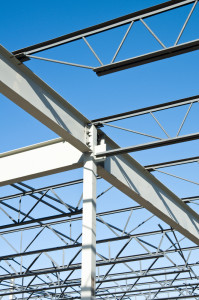Corrosion Protection Plan

 An effective corrosion protection plan is an essential aspect of the design, repair or maintenance of reinforced concrete structures such as parking garages and balconies or steel building frames wrapped in masonry, which are exposed to the elements. Severe corrosion of the embedded steel must be avoided so that the structure maintains its full strength.
An effective corrosion protection plan is an essential aspect of the design, repair or maintenance of reinforced concrete structures such as parking garages and balconies or steel building frames wrapped in masonry, which are exposed to the elements. Severe corrosion of the embedded steel must be avoided so that the structure maintains its full strength.
Corrosion of steel embedded in concrete or masonry is an electrochemical process that occurs in the presence of moisture and oxygen, which can accelerate if the structure is exposed to deicing salts or a salt-water environment. Once started, corrosion will continue until it is controlled.
To control corrosion, the steel can be coated with a protective material such as zinc, paint, or epoxy. Alternately, the electrochemical process can be mitigated with cathodic protection. Coatings generally only protect the steel until the barrier is breached, while cathodic protection provides a more active means to address corrosion.
In cathodic protection, zinc anodes may be attached directly to the steel to alter the electrochemistry and force the steel to become the cathode and be protected while the zinc anode “sacrifices” itself. Anodes can be used in new construction as well as in the repair of existing structures.
Another form of cathodic protection, applies a small electrical current directly to the steel, which prevents the electrical process of corrosion from occurring. This system requires a power supply, a sacrificial anode, and instrumentation for monitoring.
Selection of the appropriate level of corrosion protection for an existing structure is based on many factors. Among them are the level of corrosion damage, environment around the structure, potential for corrosion activity, the cost and design life of the corrosion protection system, and the expected service life of the structure.
